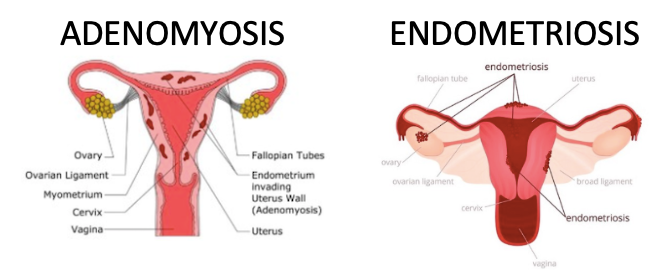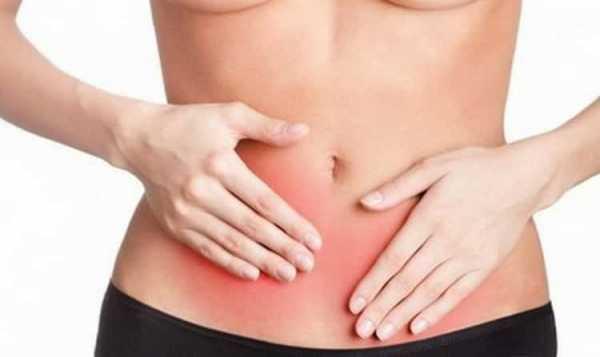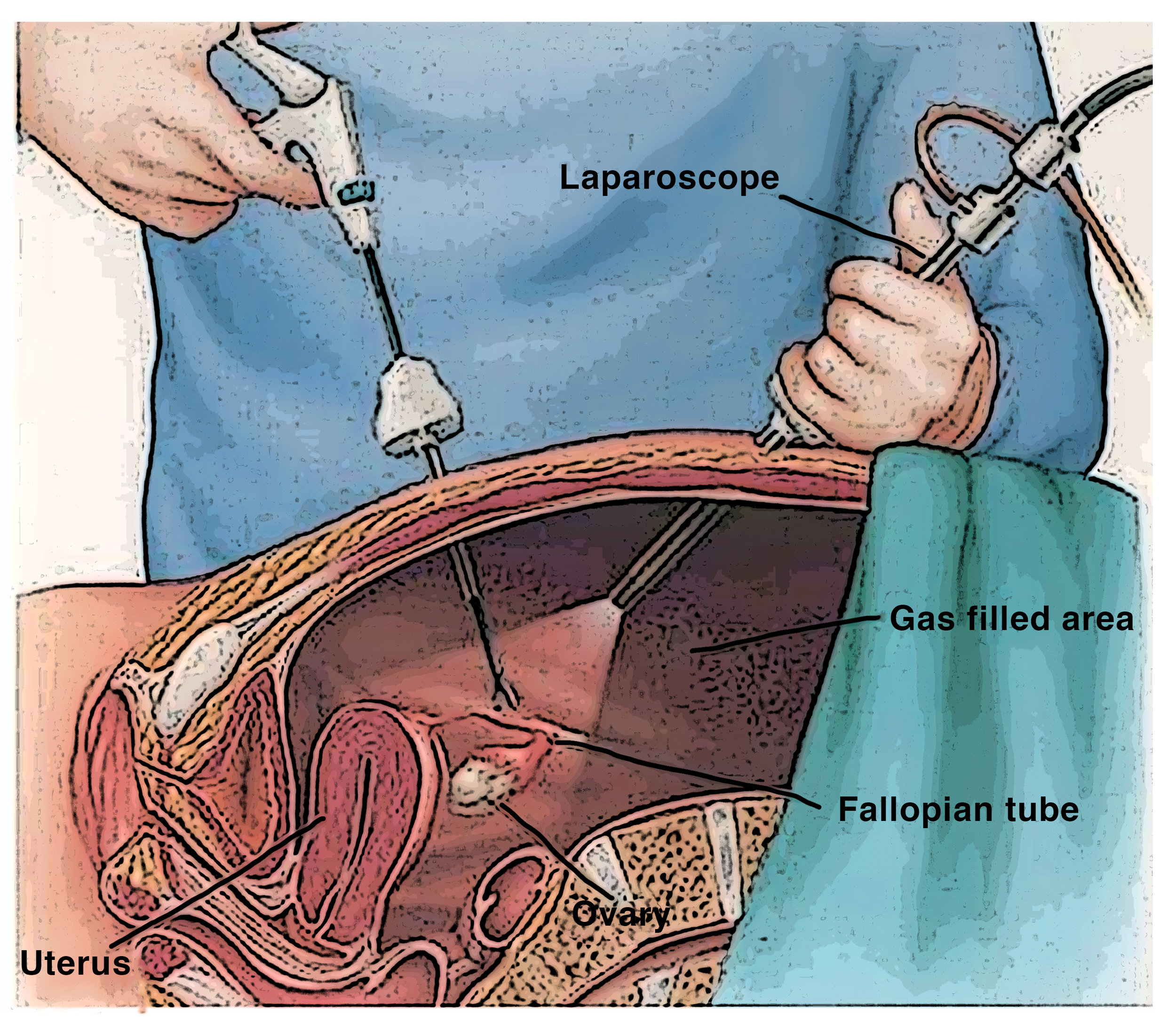People often wonder if endometriosis and adenomyosis are similar, the answer is NO.
Leaving the gynecologist’s office with a “mysterious” diagnosis of endometriosis or adenomyosis, women often perceive the doctor’s words almost as a sentence. While, Adenomyosis most commonly affects women between the ages of 40 and 50 years and is associated with a past history of childbirth, Endometriosis or endometrial implants affects women between 15 and 44. It is especially common among women in their 30s and 40s and may make it harder to get pregnant.
What is hidden behind these names, what are the symptoms of these diseases, what differentiates them from eachother, what do they threaten the health with, what are the causes and the main methods of treatment?

A woman experiencing heavy bleeding, painful periods, and chronic pain in the pelvic region, could be going through symptoms of endometriosis. This is a condition in which endometrial tissue spreads and implants beyond the uterus. During every menstrual period, this misplaced endometrial tissue can shed blood into the pelvic region and beyond, causing cysts, scar tissue, and adhesions to form over time.
But if the endometrial tissue burrows deep into the muscle of the uterus, and not outside the uterus, the diagnosis is actually adenomyosis, a condition that is related to endometriosis but has a few key differences.
In endometriosis, the endometrial tissue escapes from the uterus and might implant on the surface of the bladder, bowels, or other organs throughout the body. In adenomyosis, the endometrial tissue gets pushed into the myometrium muscle of the uterus, which is located between the inner and outer layers of the uterus organ. Once embedded in the muscle, this endometrial tissue sheds when the rest of the endometrium sheds during a period, which causes extra bleeding, pain, and cramping.
Natural treatment for endometriosis or adenomyosis
Here is the best natural remedy to cure endometriosis or adenomyosis with plants. Combined with a suitable diet against endometriosis and adenomyosis, this natural remedy can cure these diseases quite easily and without side effects. It is specially designed for patients who do not want to have surgery because each operation involves a risk. It surpasses conventional treatments that relieve pain, and attack the root of the disease. How it works?
This natural remedy contains plants that reduce the level of estrogens in the blood. This helps block the proliferation and bleeding of endometriosis and adenomyosis lesions. It will remove the pain you experience during menstruation and allow you to experience normal cycles.
FOR MORE INFORMATION CONTACT US VIA WHATSAPP BY CLICKING ON THIS LINK https://wa.me/22990431725
WHAT ARE THE SIMILARITIES AND DIFFERENCES BETWEEN ADENOMYOSIS AND ENDOMETRIOSIS
What is the difference between adenomyosis and endometriosis
The similarities and differences can be divided into different parts:
Symptoms
Symptoms of adenomyosis and endometriosis include pain ranging from mild to severe. But some women with endometriosis have no symptoms. About a third of women with adenomyosis have no symptoms.
Some of these symptoms are
Adenomyosis
- painful periods (dysmenorrhea)
- painful intercourse (dyspareunia)
- chronic pelvic pain
- abnormal bleeding (bleeding) or prolonged periods
- infertility
- an enlarged uterus
Endometriosis
- painful periods (dysmenorrhea)
- painful intercourse (dyspareunia)
- painful bowel movements (dyschezia)
- painful urination (dysuria)
- pelvic pain
- tiredness, nausea and diarrhea, especially during your period
READ ALSO: Folk remedies And Preventive Measures for dysmenorrhea
THE CAUSES
The exact causes of adenomyosis and endometriosis are not known. But researchers have identified likely mechanisms and risk factors.
Theories include:
- Adenomyosis and endometriosis can result from tissue damage and repair after trauma to the uterus.
- Estrogen production is involved in this process.
- Stem cells can be activated by damage to the endometrial tissue. They can then develop outside of their usual location in adenomyosis and endometriosis.
- Menstrual blood that gets lost in the fallopian tubes (retrograde menstruation) can leave endometrial tissue in the pelvis or other areas.
- Genetic factors may be involved. Endometriosis tends to run in families.
- Your lymphatic system can transport endometrial cells to other regions.
Risk factors
Researchers have identified certain risk factors associated with adenomyosis and endometriosis.
Adenomyosis
A higher risk of adenomyosis is associated with:
- women who have had more than one child
- women treated with tamoxifen for breast cancer
- women who have had uterine surgery, such as dilation and curettage
- depression and increased use of antidepressants
- Studies of an association of adenomyosis with smoking and ectopic pregnancy have mixed results.
Endometriosis
A higher risk of endometriosis is associated with:
- earlier menstruation
- shorter menstrual cycle (less than the typical 28-day cycle)
- higher height
- higher consumption of alcohol and caffeine
- a blood relative with endometriosis (this increases your risk by seven)
A reduced risk of endometriosis is associated with:
- higher body mass index (BMI).
- use of oral contraceptives
- regular exercise
- dietary omega-3 fatty acids

DIAGNOSIS OF ADENOMYOSIS
The doctor may suspect the presence of adenomyosis as follows:
-
Signs and symptoms
- A pelvic exam that reveals the existence of an enlarged and sensitive uterus
- Ultrasound image of the uterus
- Magnetic resonance imaging (MRI) of the uterus
In some cases, the doctor may take a sample of the uterine tissue for analysis (endometrial biopsy) and verify that an abnormal uterine bleeding is not associated with a serious disorder. However, an endometrial biopsy will not help the doctor confirm the diagnosis of adenomyosis.
The only way to confirm adenomyosis is to assess the uterus after hysterectomy. However, diagnosis by pelvic images, such as ultrasound or magnetic resonance imaging, can detect signs of this disease.
USEFUL:8 NATURAL REMEDIES TO CURE ADENOMYOSIS
Diagnosis for endometriosis
- Hysterosalpingography
- blood tests for tumor markers
- hysteroscopy
- Laparoscopy
FOR MORE INFORMATION CONTACT US VIA WHATSAPP BY CLICKING ON THIS LINK https://wa.me/22990431725
















